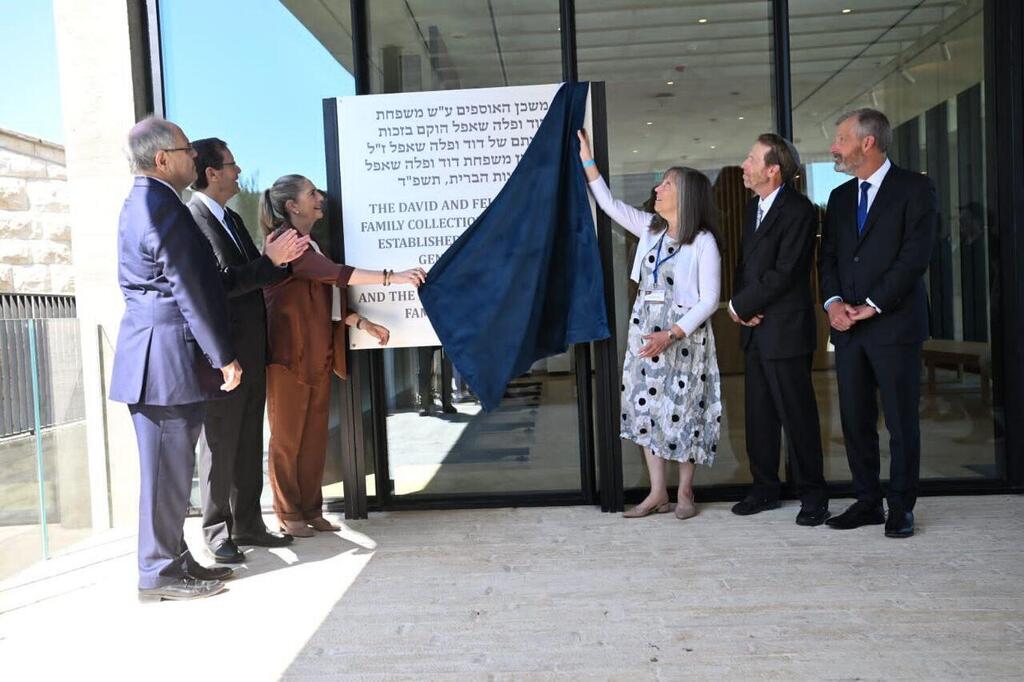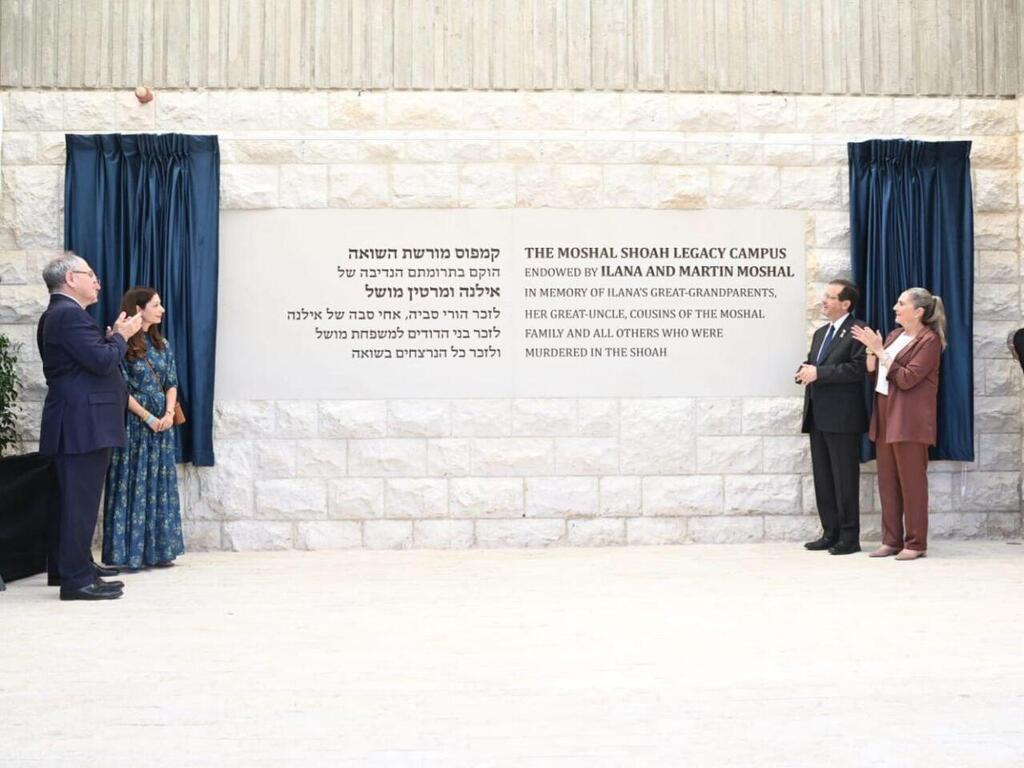Getting your Trinity Audio player ready...
Yad Vashem has inaugurated its Holocaust Heritage Campus, featuring the state-of-the-art Collections Repository. Monday's ceremony was attended by President Isaac Herzog and his wife Michal, Heritage Minister Amichai Eliyahu, Chairman of the Yad Vashem Council and Holocaust survivor Rabbi Israel Meir Lau, Yad Vashem Chairman Dani Dayan, former Yad Vashem Chairman Avner Shalev, Holocaust survivors, and donor families.
"Since its founding, Yad Vashem has aspired to be a place that collects, preserves, and tells the story of our brothers and sisters who were murdered in the Holocaust. Today, we mark another significant milestone in this long journey with the opening of the campus and the Collections Repository named after the Moshal and Shapell families," said President Herzog.
"Many of the items in the campus have been entrusted to Yad Vashem over the years, with the goal of giving a voice and identity back to the victims. Each item carries a story – a story of life, hope and pain. These items connect us to the past, reminding us of our responsibility to remember and to remind others. Each one of them is a memorial pillar that cannot be toppled, a message that the past sends to the present and future. Our duty is to continue to keep this memory alive, to give it the respect it deserves, and to preserve and make it accessible for those who were, those who will be, and for all of humanity," he added.
Many of the items in the campus have been entrusted to Yad Vashem over the years, with the goal of giving a voice and identity back to the victims.
Spanning an area of 63,290 square feet, the repository houses millions of documents, photographs, testimonies, Pages of Testimony, artworks, and items collected by Yad Vashem since its establishment. It also includes items submitted through the "Gathering the Fragments" project, which collects Holocaust-era items from the public. Each item tells a unique story of individuals, families, and communities during and around the Holocaust, adding another piece to the puzzle that is the full story of the Holocaust.
Today, Yad Vashem's collections encompass an enormous variety of items with historical, research, documentary and emotional value. These include approximately 227 million pages of documentation, 135,000 Holocaust survivor testimonies, 541,500 photographs from the Holocaust era, 33,000 items, and about 14,000 works of art.
The complex where the collections will be preserved includes four dedicated underground floors and an additional floor containing five of the world's most advanced conservation laboratories for preserving paper, photographs, items, textiles, and art. The building is equipped with innovative technologies to ensure the optimal preservation of these national treasures: air filtration systems, climate control systems, an oxygen reduction system to prevent fires, and digital monitoring and control systems that maintain optimal storage conditions.
"Since its establishment, Yad Vashem has been working to collect and preserve items of Holocaust victims and survivors to ensure their voices are heard," said Yad Vashem Chairman Dani Dayan. "The national treasures that will be housed here from now on hold significance for us as Jews and as human beings. They are silent witnesses bearing the stories of Jews during the Holocaust. In my view, the collections in the repository on the campus are the crown jewels of the Jewish people, they are our most exposed nerves, they are our DNA. They will be here for future generations."
The Collections Repository also includes a video art installation by artist Ran Slavin, titled "122,499 Files." The installation offers a unique and different glimpse into Yad Vashem's collections. Through an original visual approach, Slavin created a digital mosaic selected from hundreds of thousands of items that are usually not visible or exhibited to the public.
A 26-feet-long screen reveals to the viewer a surprising and bustling collage of original documentation created during the Holocaust and the Jewish life that preceded it, between the world wars. Viewing the various items in the installation, which has a full length of about 45 minutes, sheds light on the lost world and illustrates the magnitude of the rupture against the strength of life. The installation's curator is Miri Shavit, Head of the Collections Division at Yad Vashem.




